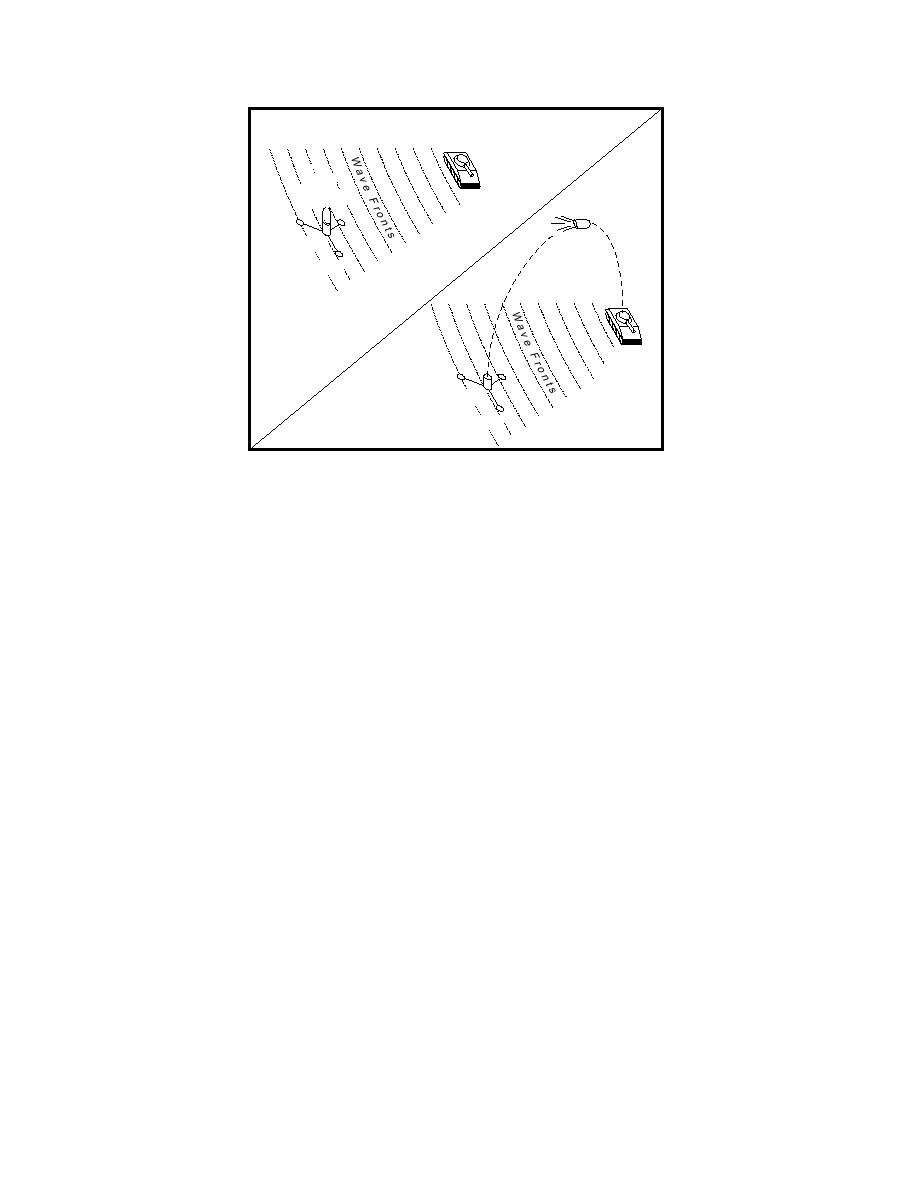
A eismic
S
S oustic
c
WAM
ource
Warhead
Warhead
Computterr
Compu o
Sensor
aTarget Acquisition
nd Tracking Phase
A eismic
S
S oustic
c
ource
Computtorr
Compue
Sensor
Warhead Deployment Phase
Figure 1. WAM conception of target acquisition and engagement.
explosions. The application of the Capon maxi-
beamformers as a function of SNR under the as-
mum-likelihood beamformer to teleseismic events
sumption that the spatial correlation matrix is
using the Large Aperture Seismic Array in Mon-
known exactly and the sources are ideal stationary
tana was first reported by Capon et al. (1967). In
plane waves. For two or more sources they show
1969 Capon derived the beamformer and noise
that the bias in the wavenumber estimate is a
suppression characteristics. Beamforming is also
function of the source separation and the degree of
applied to sonar problems where passive arrays of
coherence between the sources, the SNR, the rela-
hydrophones locate and track submarines and
tive source power, and the number of observation
surface vehicles (Hahn 1975). Aircraft tracking
array elements. When the spatial correlation ma-
with both acoustic and radar technologies and
trix must be estimated from a finite amount of
stellar mapping of distant radio-wave emissions
data, De Graaf and Johnson (1985) show how the
are other prominent areas of application for
maximum-likelihood estimator becomes increas-
beamforming technology.
ingly unstable as the data set is reduced.
The use of seismic and acoustic arrays to track
Knapp and Carter (1977) and Carter (1977) dis-
and locate targets of military interest dates from
cussed the impact of source motion on bias in
the Vietnam War. Beginning in the late 1960s,
bearing estimation from a two- or three-element
military efforts focused, with limited success, on
array using a time-delay estimation procedure.
locating artillery positions. In the later 1970s,
Gragg (1990) showed that there is a time depen-
targets such as surface vehicles were investi-
dence in the Doppler-shifted spectra observed by
gated (Cress 1976). Recently, bearing estimation of
a single receiver when an acoustic source has a
slow-moving military aircraft using acoustic and
velocity vector that does not pass through the
seismic array processing technologies has been
receiver location. He showed that this time depen-
actively investigated. Of particular note are the
dence makes the Doppler shift difficult to predict.
efforts of Nawab et al. (1985) and Lacoss et al.
Unless source motion effects can be corrected,
(1991), who have successfully tracked both air-
there will be a phase bias in the Fourier estimate of
borne and ground targets at distances of a few
the time series. The impact of the phase bias from
kilometers.
source motion on wavenumber estimates remains
Several researchers have investigated the im-
unquantified.
pact of nonideal source attributes on bearing esti-
In the following sections we discuss the
mates. De Graaf and Johnson (1985) discuss the
beamforming equations and explicitly define the
bias of Bartlett and Capon maximum-likelihood
frequency domain estimation process used to gen-
2



 Previous Page
Previous Page
